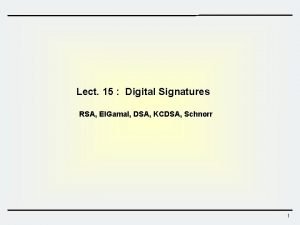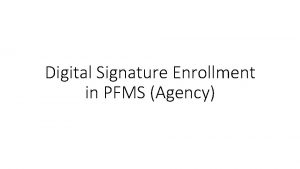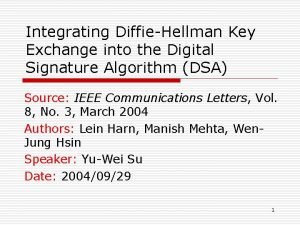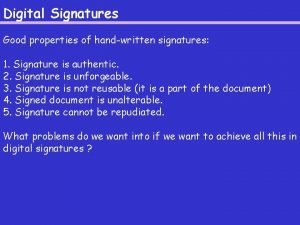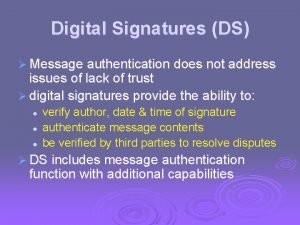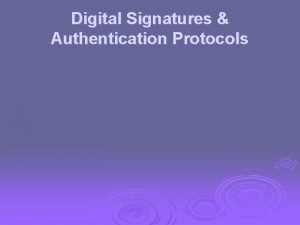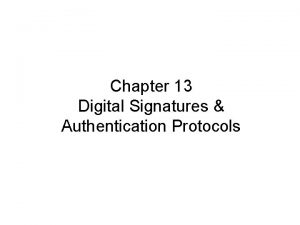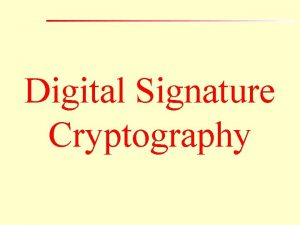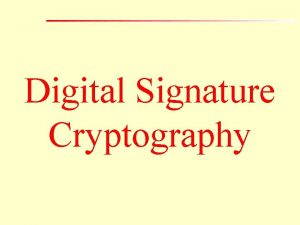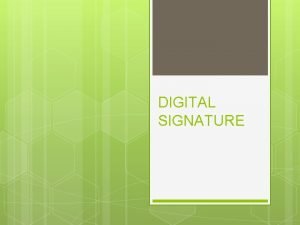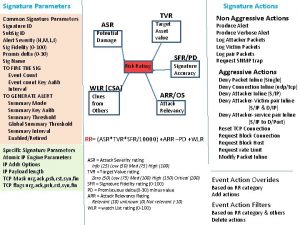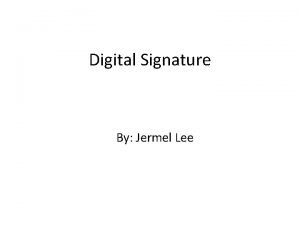Digital Signature 1 PROCESS the digital signature process










- Slides: 10

Digital Signature 1

PROCESS the digital signature process. The sender uses a signing algorithm to sign the message. The message and the signature are sent to the receiver. The receiver receives the message and the signature and applies the verifying algorithm to the combination. If the result is true, the message is accepted; otherwise, it is rejected. Topics discussed in this section: Need for Keys Signing the Digest 7

Continued Digital signature process 8

Need for Keys Adding key to the digital signature process Note 9 A digital signature needs a public-key system. The signer signs with her private key; the verifier verifies with the signer’s

Signing the Digest Figure 13. 3 Signing the digest 11

SERVICES We discussed several security services in Chapter 1 including message confidentiality, message authentication, message integrity, and nonrepudiation. A digital signature can directly provide the last three; for message confidentiality we still need encryption/decryption. Topics discussed in this section: Message Authentication Message Integrity Nonrepudiation Confidentiality 12

Message Authentication A secure digital signature scheme, like a secure conventional signature can provide message authentication. Note A digital signature provides message authentication. 13

Message Integrity The integrity of the message is preserved even if we sign the whole message because we cannot get the same signature if the message is changed. Note A digital signature provides message integrity. 14

Nonrepudiation Using a trusted center for nonrepudiation Note Nonrepudiation can be provided using a trusted party. 15

Confidentiality Figure 13. 5 Adding confidentiality to a digital signature scheme A digital signature does not provide privacy. If there is a need for privacy, another layer of encryption/decryption must be applied. 16
 Message authentication code
Message authentication code Rsa digital signatures
Rsa digital signatures Pfms dsc
Pfms dsc Cipher based message authentication code
Cipher based message authentication code Diffie hellman signature
Diffie hellman signature Properties of digital signature
Properties of digital signature Schnorr rsa
Schnorr rsa Digital signature
Digital signature Digital signature authentication protocol
Digital signature authentication protocol Digital signature in cryptography and network security
Digital signature in cryptography and network security Digital signature authentication protocol
Digital signature authentication protocol

